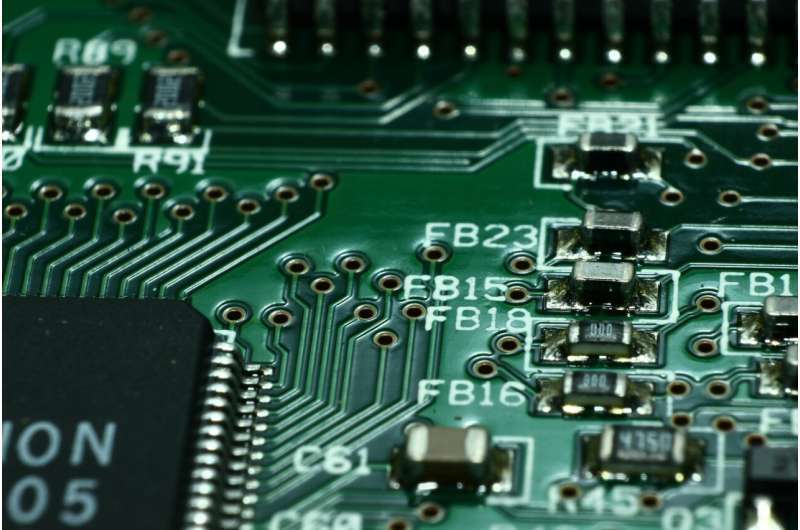Skyrmion 'whirls' show promise for low-energy computer circuitry

UNSW material scientists have shed new light on a promising new way to store and process information in computers and electronic devices that could significantly cut down the energy required to maintain our digital lifestyles.
Skyrmions, which can be described as 'whirl' shaped magnetic textures at the nano-level, have in recent years been flagged as contenders for a more efficient way to store and process information. One of their advantages is that they possess a kind of built-in enhanced stability over time, making stored information non-volatile and 'live' longer. Up until now, information in computers is processed through dynamic memory, which is less stable and therefore requires more energy to maintain.
According to researchers from UNSW Science, who also collaborated with researchers from Brookhaven National Laboratory in the US and the University of Auckland, the potential of what they call "skyrmion lattice manipulation" to lower energy consumption in electronics is an attractive alternative.
"We investigate nanoscale magnetic 'whirls' called skyrmions in a new oxide material, Te-doped Cu2OSeO3," says Professor Jan Seidel from UNSW's School of Materials Science and Engineering.
"We show how these skyrmions form and transform in thin films of the material with applied magnetic field, temperature and as a function of material composition. We especially investigate thin films of the material, only a few hundred atoms thick.
"Thin films in single phase, skyrmion host materials so far have been rarely investigated, but they are a requirement for future nanoelectronics applications."
In showing how skyrmion lattice manipulation can be achieved, the group has cleared a path for the development of skyrmion nanoelectronic circuitry in the future.
"Our work is exciting, because Lorentz microscopy is one of the few available methods to see skyrmions directly, and even allows us to make movies about their dynamic behaviour," Professor Seidel says.
Professor Seidel's group will next investigate how to control individual skyrmions in this material. They will also study other doping elements and ratios to further understand their influence on skyrmion properties.
More information: M.-G. Han et al. Scaling, rotation, and channeling behavior of helical and skyrmion spin textures in thin films of Te-doped Cu2OSeO3, Science Advances (2020). DOI: 10.1126/sciadv.aax2138
Journal information: Science Advances
Provided by University of New South Wales




















